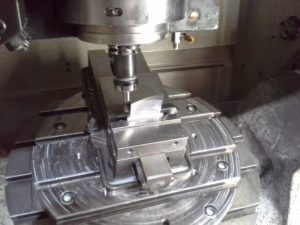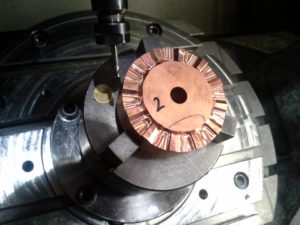ESPRIT CAM helps reduce cycle time 20% and increase programming productivity by 10%.

Established almost 70 years ago, FLT-Krasnik employs over 2,000 workers and is the largest bearing manufacturer in Poland. The company produces standard off-the-shelf and custom bearings for the automotive, electric motor, power engineering, metallurgy, mining and agriculture industries. The company’s products include tapered roller bearings, ball bearings, cylindrical roller bearings, spherical roller bearings and other bearing configurations. The company’s customers have increasingly been demanding more sophisticated bearing designs with shorter delivery leadtime. To address this challenge, the company has purchased 5-axis computer numerical control (CNC) machining centers that are capable of producing highly complex designs with, in most cases, only one or two setups. On the other hand, the widespread use of 5-axis machines at the bearing manufacturer creates a difficult programming challenge. In the early stages of operating these machines, the company’s NC programmers had difficulty in producing programs for parts with complicated geometries. Management also felt that they were limited in terms of the cycle time that could be achieved on 5-axis machines and that excessive time that was required to complete the programming process. FLT-Krasnik faced the challenge of rapidly ramping up its 5-axis programming capabilities in order to ensure the timely return on investment on these expensive machines. Managers decided to invest in the latest CAM software and, after considering the leading programs on the market, the company opted to invest in ESPRIT from DP Technology. The ESPRIT CAM system simplifies programming for 5-axis machines through its intuitive interface and workflow, full range of 5-axis machine cycles and dynamic onscreen program verification capability which eliminates the need for expensive machine tool dry runs. ESPRIT 5-axis machining cycles include 5-axis composite milling, 5-axis ruled swarf milling, 5-axis surface swarf milling, 5-axis contour milling, 5-axis impeller machining and many others. These capabilities make it easy to achieve the superior surface quality, part accuracy, and material removal rates provided by today’s multi-axis machine tools.
Integrating ESPRIT

FLT-Krasnik frequently uses ESPRIT’s SolidMill FreeForm module for 5-axis free-form machining. SolidMill FreeForm also offers the flexibility to choose amongst seven different semi-finishing and finishing cycles: Planar, Translation, Normal, Rotation, Offset, Parametric, and Spiral. Further, SolidMill FreeForm’s combinable functionality enables users to utilize 3D finishing cycles for roughing and/or pre-finishing. These include: Boundary Contour, Z-Upper/Lower Limits and/or Stock Automation. FLT-Krasnik also frequently uses the Port Roughing cycle, an improvement in the latest version of ESPRIT. The Port Roughing cycle creates a five-axis roughing operation to remove the material inside an area where the tool must enter through a restricted opening. The shape of the toolpath is an offset of the port surfaces, starting at the surface and proceeding inward at a constant step-over.One example of FLT-Krasnik’s use of simultaneous 5-axis machining can be seen in machining external molding elements, which are beyond the capabilities of many of its competitors. ESPRIT’s unique five-axis functionality provides users with more toolpath options, blade roughing and chamfering, helping to increase the efficiency of machining these and other complex components. Since implementing ESPRIT CAM software, FLT-Krasnik has converted many challenging parts from manual or 3-axis to 5-axis CNC machining. The end result has been a substantial improvement in machining and programming productivity as well as an improvement in component accuracy. “With ESPRIT we are typically able to reduce cycle time by about 20% while increasing programming productivity by around 10%,” said Krysztof Paluch, Process Engineer and Programmer at FLT-Krasnik. “The result is that we have been able to please our customers and increase our revenues.”



